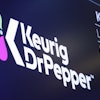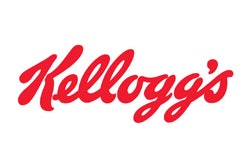Demand for biopharmaceuticals, especially monoclonal antibody-related products, continues to grow at a very healthy pace with total biopharmaceutical sales reaching $107 billion in 2010, or approximately 12 percent of the total pharmaceutical market. In 2010, there were 29 biopharmaceutical “blockbuster” products with annual sales over $1 billion, of which over 60 percent were produced in mammalian cell culture. Five of the top 10 selling pharmaceutical products are now monoclonal antibody-related products, including Remicade, Enbrel, Humira, Avastin, and Rituxan. These blockbuster products, combined with the long list of monoclonal antibody (MAb) products in development, make MAbs the fastest growing class of biopharmaceutical products.
To meet the growing demand for existing and new MAb products, the processes used to manufacture these products must be scaled-up from the initial development scale to increasing scales throughout clinical development and, in some cases, after commercialization. Once a product candidate is selected for clinical development, production of material for human clinical trials is the rate-limiting step. The Chemistry, Manufacturing, and Control (CMC) activities that are needed to develop a manufacturing process and associated quality control test methods can require up to two years to complete. Many critical decisions that will impact the ability to meet material demands in the future are made in the early stages of product development. To minimize the risk of process scale-up failure, many companies rely on platform processes, including established production cell lines and cell culture methods, as well as platform approaches to purifying the product from the cell culture media. Herein we describe the considerations in developing and scaling-up MAb manufacturing processes to meet the increasing demand for these products throughout development and commercialization.
Overall Considerations
The overall goal of a MAb CMC development program is to develop a reliable and reproducible process that enables production of a MAb product that is safe to administer to humans. The process is initially developed and run at a small production scale, typically 500-1,000 L, due to the relatively low product requirements in early clinical trials. If the product is successful in the clinic, however, the process must be scalable to scales of greater than 2,000 L and comply with all relevant regulatory guidelines for later stage clinical trial material production.i, i As development of the MAb product proceeds from pre-clinical testing through human clinical trials and ultimately to commercialization, the regulatory requirements increase in both scope and depth.
Cell Culture Process Development and Scale-up
A critical aspect of the development of any MAb is the development of a suitable genetically-modified, engineered cell line capable of producing sufficient quantities of the product. Many emerging or established technologies are available to improve the speed of cell line development or the specific productivity levels that can be achieved.ii To reduce the risk of scale-up issues, use of an established cell line and expression technology to create the production cell line is recommended. After the production cell line is established, a cell culture, or upstream, process that enables production at the desired scale is developed. The upstream process enables expanding the initial cells up to a sufficient biomass to inoculate the bioreactor, growing the cells to maximum density and viability, and supporting maximum productivity. Upstream process development includes systematic optimization of the growth and production culture medium and the bioreactor conditions to produce the maximum amount of active product of desired quality with the minimum amount of resource consumption (bioreactor volume, media and time).iii, iv, v
A cell culture process is typically developed in bench scale bioreactors and then scaled up for the initial production of clinical material. When scaling up a cell culture process, there is always some unavoidable variation between the larger scales used in cGMP manufacturing and the smaller bench-scale bioreactors used for process development. Therefore, some refinements of the cell culture process may be required at the production scale. The need to obtain data at the production scale prior to finalizing all aspects of the process make it essential to conduct non-cGMP pilot, or engineering, runs at scale prior to producing clinical material under full cGMP conditions. By running at least one non-cGMP batch at scale and adjusting some parameters based on the data from this run, companies can significantly de-risk the initial cGMP run and increase the likelihood that subsequent production runs at the same scale will be reproducible, robust, and capable of supporting all the early stage clinical activities without major process changes.
Cell culture processes continue to be scaled up throughout development to meet increasing material needs in the clinic and eventually commercial requirements. Various strategies can be used to accommodate the increased material requirements, including the use of parallel scale-up and the multi-batch/cycle approach by repeated use of the equipment. For instance, the campaign could involve a 2,000 L fermentor and require 2-5 batches at a product titer of 1-2 g/L. For Phase 3 clinical trials, larger quantities of drug product are required so it will be necessary to either run more production campaigns at the same size bioreactor scale as used for production of early stage clinical trial materials or scale-up to a larger bioreactor.
One fundamental phenomenon that occurs during scale-up is the decrease in surface area (a square function) per unit volume (a cubic function). Since surface area per unit volume decreases with increasing equipment size, in larger bioreactors there should be fewer product quality problems related to any undesirable phenomena occurring on various interfaces, such as non-specific adsorption and/or surface induced precipitation. Effects of system dead volume will also vary with scale, typically getting smaller at larger scales, thus creating fewer issues and less impact on productivity or product quality. However, other critical parameters for optimal cell growth and productivity may be more difficult to control at larger scales, such as heat transfer for heating and cooling due to the relative decrease in surface area, high localized shear associated with the higher tip speeds of impellers, and poorer gas exchange (e.g., carbon dioxide removal). These considerations must be addressed in order to achieve successful scale-up of cell culture processes.vi
Development and Scale-up of Purification Processes
Following cell culture, the MAb must be separated from the cells, purified to remove impurities and potential contaminants to an acceptable level, and formulated at the correct concentration with the proper excipients. These operations are collectively termed ‘downstream processing’ and typically consist of a dedicated separations step to remove the cells and cell debris from the cell culture media that contains the MAb, two or three chromatography steps including an initial capture step to selectively concentrate the MAb and remove the bulk of the impurities, and several steps to inactivate or remove endogenous or potential adventitious viruses.vii The challenge of downstream process scale-up is that there are often unavoidable variations between different scales.
The scale at which the final production process will be operated must be defined before scale up calculations or studies are performed. The final scale will depend on expected market demand which, together with the cell culture technology employed, will dictate the number of batches needed per year. With the mass per batch defined, it is a fairly simple task to scale all unit operations in the manufacturing process, as their size can be calculated taking into account mass produced in a single batch, cycling philosophy for a given unit operation, and yield of preceding steps.
A typical large-scale process for purification of MAbs consists of three main types of unit operations, namely liquid/solid handling, filtration, and chromatography. Liquid handling includes storage, transfer and mixing of process solutions, including product pools, buffers and cleaning solutions. For antibody processes, solid handling refers to removal of biomass, which is typically done by centrifugation. Filtration includes all the procedures where either filters or membranes are used, and can be further divided into normal flow filtration and tangential flow, respectively. Chromatography includes both batch and column separations that are either based on adsorptive separations, molecular size, or both. Membrane chromatography is also included in this category. For scale-up for each unit operation in a manufacturing process, detailed studies should always be performed to develop a thorough understanding of relevant scale-up parameters and to ensure that the process behaves as expected at the final scale.
Conclusions
Manufacturing of MAbs and other biopharmaceuticals presents unique challenges throughout product development. By planning for process scale-up at the initiation of product development and by making decisions to improve scaleability throughout process development, the inherent risks of scaling up biopharmaceutical processes can be reduced with minimal impact to the product development timeline.
For more information, please visit www.bptc.com.
References
i Food and Drug Administration, Center for Biologics Evaluation and Research (US). Points to consider in the manufacture and testing of MAb products for human use [Internet].Washington, DC: Department of Health and Human Services; 1997 Feb 28 [cited 2008 Dec 3]. 50 p. Available from: http://www.fda.gov/downloads/BiologicsBloodVaccines/GuidanceComplianceRegulatoryInformation/OtherRecommendationsforManufacturers/UCM153182.pdf.
ii Jones SD. Technologies to improve cell line development and engineering. Presented at Cambridge Healthtech Institute’s Peptalk; 2009 Jan 11-16; San Diego, CA.
iii Senger RS, Karim MN. Optimization of fed-batch parameters and harvest time of CHO cell cultures for a glycosylated product with multiple mechanisms of inactivation. BiotechnolBioeng. 2007 Oct;98(2):378-90.
iv Chartrain M, Chu L. Development and production of commercial therapeutic monoclonal antibodies in mammalian cell expression systems: an overview of the current upstream technologies. Curr Pharm Biotechnol. 2008 Dec;9(6):447-67.
v Gorfien SF, et al. Optimized nutrient additives for fed-batch cultures. BioPharm Int. 2003 Apr;16(4):34-40.
vi Xing Z, Kenty BM, Li ZJ, and Lee SS, Scale-up analysis for a CHO cell culture process in large scale bioreactors. BiotechnolBioeng. 2009 Jul 1;103(4):733-46.
vii Gottschalk U. Downstream processing of monoclonal antibodies: from high dilution to high purity. BioPharm Int. 2005 Jun;18(6):42-58.























